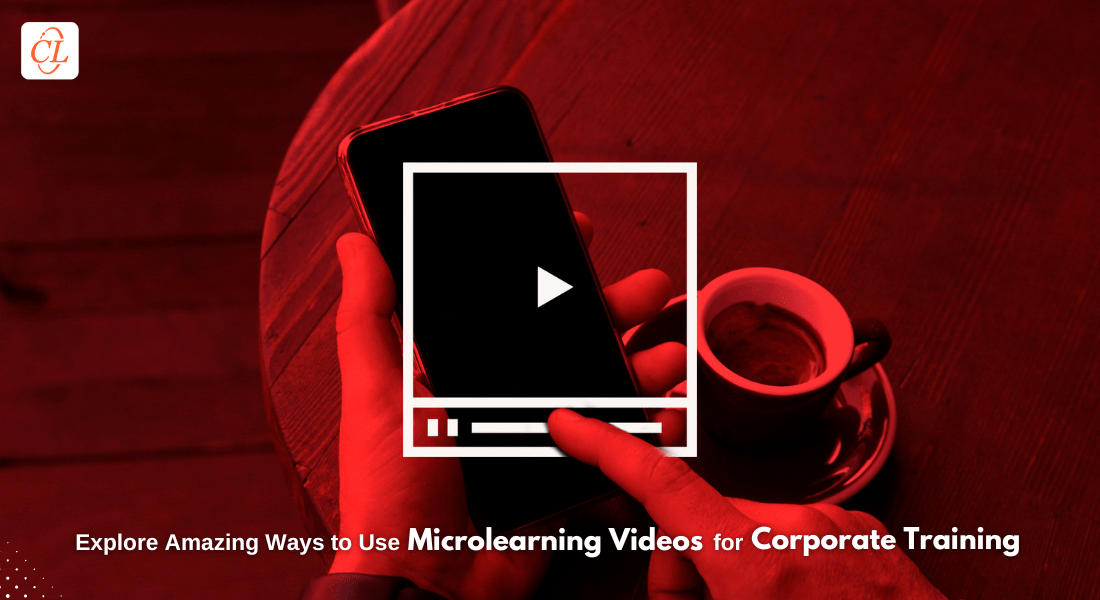How Microlearning Videos Help Boost Training Impact?

Struggling to keep your employees engaged in traditional, lengthy training sessions? Let's face it, in today's fast-paced business world, attention spans are shrinking, and employee time is precious. Traditional training methods often leave learners feeling overwhelmed and disengaged. But what if there was a way to deliver focused learning content in a captivating format that maximizes impact and knowledge retention? Enter microlearning videos.
These bite-sized learning modules, typically ranging from 1-5 minutes, are revolutionizing corporate L&D. Microlearning video offer a powerful tool to equip your workforce with the skills and knowledge they need to excel, all while keeping them engaged and motivated.
Maximize Learning Impact with Microlearning Videos
Challenge : Traditional training struggles to engage learners with shrinking attention spans and busy schedules.
Solution: Microlearning videos! These short, focused videos (1-5 minutes) deliver impactful learning in a captivating format.
Benefits:
- Increased Engagement: Bite-sized content keeps learners focused and motivated.
- Improved Knowledge Retention: Spaced repetition through microlearning videos enhances long-term memory.
- Accessible & Mobile-Friendly: Learners can access training on-the-go, anytime, anywhere.
How to Produce Compelling Microlearning Videos? [Process]
The production process of a compelling microlearning video involves several key steps:
- Scripting: This is where you define the learning objective and craft a clear, concise script that outlines the key information to be delivered. Keep in mind the short attention span – focus on a single learning objective and avoid information overload.
- Storyboarding: Visually map out the key points of your script with storyboard panels. This helps visualize the flow of the video and identify any potential gaps or areas needing further explanation.
- Recording: This can involve screen recordings for software tutorials, animated explainer videos, or live-action recordings with subject matter experts. Choose the recording format that best suits your content and learning objective.
- Editing: The editing stage is where your video comes to life. Here, you weave together your recorded elements with visuals, audio narration, and music to create a polished and engaging learning experience.
- Integrating Interactive Elements: Consider adding quizzes, polls, or branching scenarios within your video to encourage active learning and knowledge retention. These elements not only assess learner comprehension but also make the learning experience more interactive.
- Review & Revision: Get feedback from colleagues, subject matter experts, and even potential learners before finalizing your video. This ensures the content is clear, accurate, and resonates with your target audience.
→ Download eBook: Microlearning in Your Learning Strategy
How to Create Impactful Microlearning Videos?
- Keep it Simple: Prioritize clarity and focus. Avoid overloading viewers with complex information or lengthy explanations.
- Engaging Visuals: Incorporate high-quality visuals, animations, or infographics to enhance understanding and keep viewers engaged.
- Compelling Narration: Use clear, concise, and engaging narration. Consider using a professional voiceover artist for a polished feel.
- Background Music & Sound Effects: Strategic use of background music and sound effects can enhance the mood and keep viewers captivated.
- Call to Action: End your video with a clear call to action, encouraging viewers to apply their newly acquired knowledge or explore further resources.
How to Create Engaging Microlearning Videos? [Videos]
Microlearning Videos: What is the Best Deployment & Distribution Strategy to Reach Your Learners?
Once your microlearning video is complete, a well-defined deployment strategy ensures it reaches your target audience. Here are some key considerations:
- Structured Deployment: Plan a rollout strategy that considers your target audience and learning objectives. Will you release all videos at once, or will you introduce them in a specific sequence?
- Delivery Platform: Choose the most appropriate platform for delivering your microlearning videos. Options include your Learning Management System (LMS), company intranet, or a dedicated mobile app. Consider accessibility across devices and ease of access for learners.

Use Cases: Microlearning in Action
Microlearning videos can be adapted to various corporate training needs. Here are some examples:
- Onboarding New Hires: Provide bite-sized modules on company culture, benefits, and essential software tools.

- Product Knowledge Training: Explain new product features or functionalities through short video tutorials.
- Compliance Training: Deliver essential information on company policies, safety procedures, or data security regulations.
- Skill Development: Offer microlearning modules for soft skills like communication, leadership, or time management.
- Performance Improvement: Address identified performance gaps by providing targeted microlearning videos on specific skills or knowledge areas.
Wrapping Up
Microlearning videos offer a versatile and impactful tool for corporate L&D professionals. By following these steps and considering design tips, deployment strategies, and use cases, you can create engaging microlearning experiences that empower your workforce and drive business success.
Want to delve deeper into how microlearning can revolutionize your corporate training strategy? Download our free eBook, "Microlearning in Your Learning Strategy."





![What are the Steps for Effective Microlearning Design? [Infographic]](https://blog.commlabindia.com/hubfs/blogs/steps-effective-microlearning-design-info.jpg)